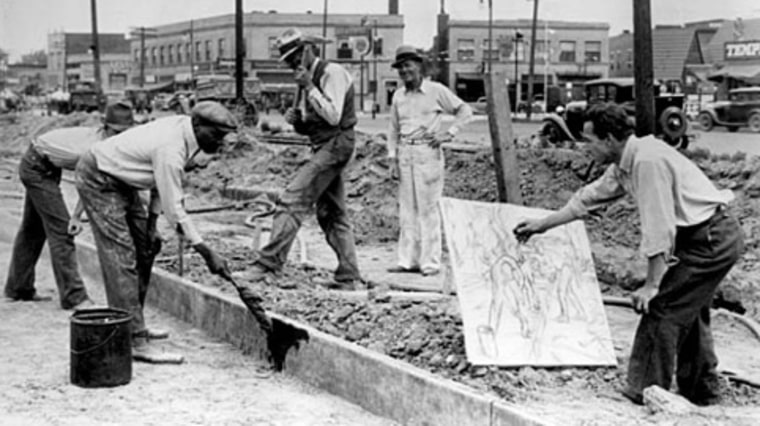The New Deal programs of the 1930s helped revive the U.S. economy after the Great Depression. In 1935, the Social Security Act provided retirement benefits for U.S. workers, but domestics and farm workers were initially excluded from eligibility, a policy that largely affected blacks and Latinos.
The GI Bill of Rights or the Servicemen's Readjustment Act of 1944, which provided for college and vocational education for returning World War II veterans as well as one-year of unemployment compensation, resulted in an expansion of the middle class. The GI bill also provided loans for returning veterans to buy homes and start businesses, but non-whites were widely discriminated against in these programs. The legacy of discrimination in these programs served to create and maintain the wealth gap between whites and non-whites, which is reflected in rates of home ownership, assets, savings and investment even today.
The 1930 census racial categories included: Chinese, Filipino, Hindu, Indian, Japanese, Korean, Mexican, Negro, White. The 1930 census added Mexican, then dropped the category under pressure from the Mexican government. According to census department documents, the Mexican population was added to the white category in revised reports. Mexicans counted as white until 1970 when they were reclassified in the census as Hispanic origin.
The U.S. declared war on Japan after Pearl Harbor was attacked in 1941.
Approximately 120,000 Japanese and Japanese Americans—the majority of whom were citizens—were moved to facilities called "war relocation camps" during World War II. President Franklin Roosevelt authorized the internment with executive order 9066, which let military commanders designate areas from which "any or all persons may be excluded." Twelve days later, the order was used to declare that all people of Japanese ancestry were excluded from the entire Pacific coast, including California and parts of Oregon and Washington. In 1944, the Supreme Court upheld the constitutionality of the order, arguing that it was permissible to curtail the civil rights of a racial group when there was a "pressing public necessity." Some compensation to internees for property losses during the war was paid in 1948, but it wasn’t until 1990 that the U.S. government paid reparations to surviving internees.
World War II ended on the European front in 1945, and the Japanese surrendered after the U.S. dropped bombs on Hiroshima and Nagaski.
The Luce-Celler Act of 1946 passed effectively ending statutory discrimination against South Asian Indians and Filipinos.
In 1948, President Truman issued an executive order desegregating the military.
